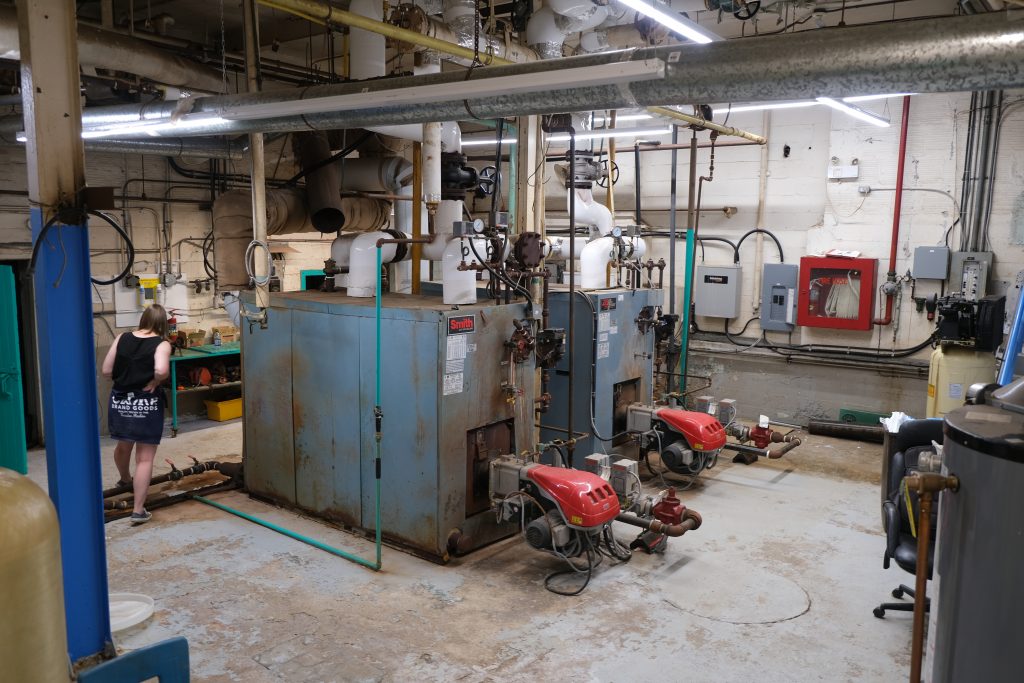
UnBQ Boiler Room
The boiler room and former coal shoot at Universit…
Read moreThe 1st Floor of University nuhelot’įne thaiyots’į nistameyimâkanak Blue Quills (UnBQ). Important areas include four large classrooms and the chapel. Click on the triangle to load the point cloud. Labels on the point cloud indicate past room functions.


The first floor of UnBQ is currently used for administrative and operational functions of the university. Many of the smaller rooms on this floor are used as offices for current staff, including the main office for the university. The west side of this floor features two classrooms with an office in between. The east side also has two classrooms but with access to the fitness center on the second floor of the gymnasium. Along the main hallway of this floor are mostly staff offices, bathrooms, and storage rooms. The university library is located at the north end of the center wing. The library has an upper level which was added to the north end of the building to increase shelving space. The addition also connects this wing via an interior stairwell downstairs to the boiler room on the basement.
When Blue Quills operated as a residential school, there were still two pairs of classrooms on either side of the floor. Grades 1,2 and 3,4 shared the classes on the west side of the school, and grades 5,6 and 7,8 were on the east. School work was often challenging for students, who usually arrived at the school not knowing English. Verna Daly remembers that she “was ahead of some of my classmates because [she] knew how to write, this and that, and [she] had learned English at the Charles Camsell Hospital” before arriving at Blue Quills at the age of five. Margaret Cardinal recalls being physically punished by teachers in her for not being able to read English well in her grade three class.
The current library originally functioned as the school chapel. The chapel could be accessed directly via a corridor leading from the front entrance, so community members could attend services without having to walk through the school. As with students, women and men were separated on either side of the chapel; the girls’ to the west and the boys’ to the east. The rooms located directly to the left and right of the entrance were visiting rooms for students and staff who lived on site. Positioning them near the entrance meant that visitors were not required to walk through the rest of the building. Sherri Chisan, President of UnBQ, shared that the visiting room for staff had comfortable padded, seating, and was richly decorated. Across the hallway, the room where students met with family members was largely bare with plain benches.
This page is pending approval from UnBQ IRS Advisory group.
Left click and drag your mouse around the screen to view different areas of each room. If you have a touch screen, simply drag your finger across the screen. Your keyboard's arrow keys can also be used. Travel to different areas of the third floor by clicking on the floating arrows.
This image gallery includes modern and archival photos of UnBQ's first (main) floor.
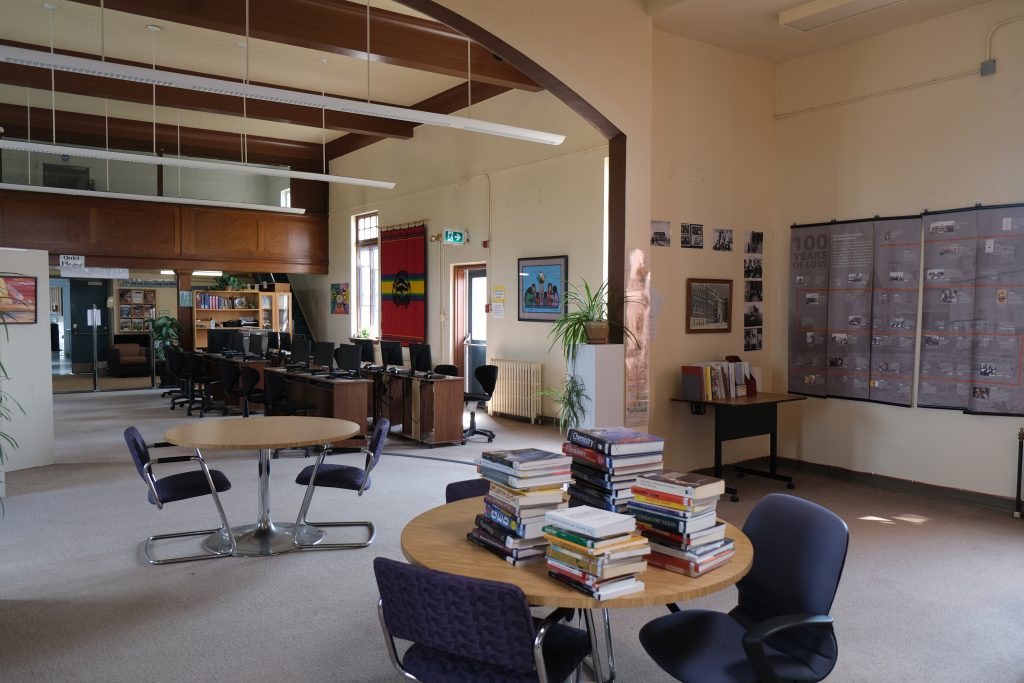
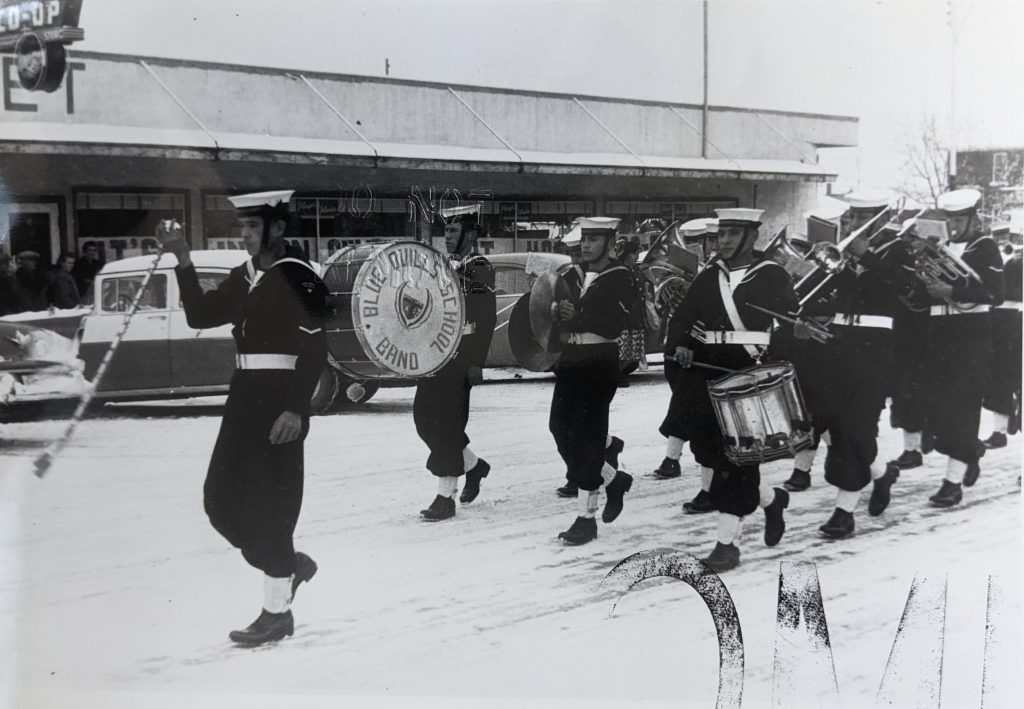

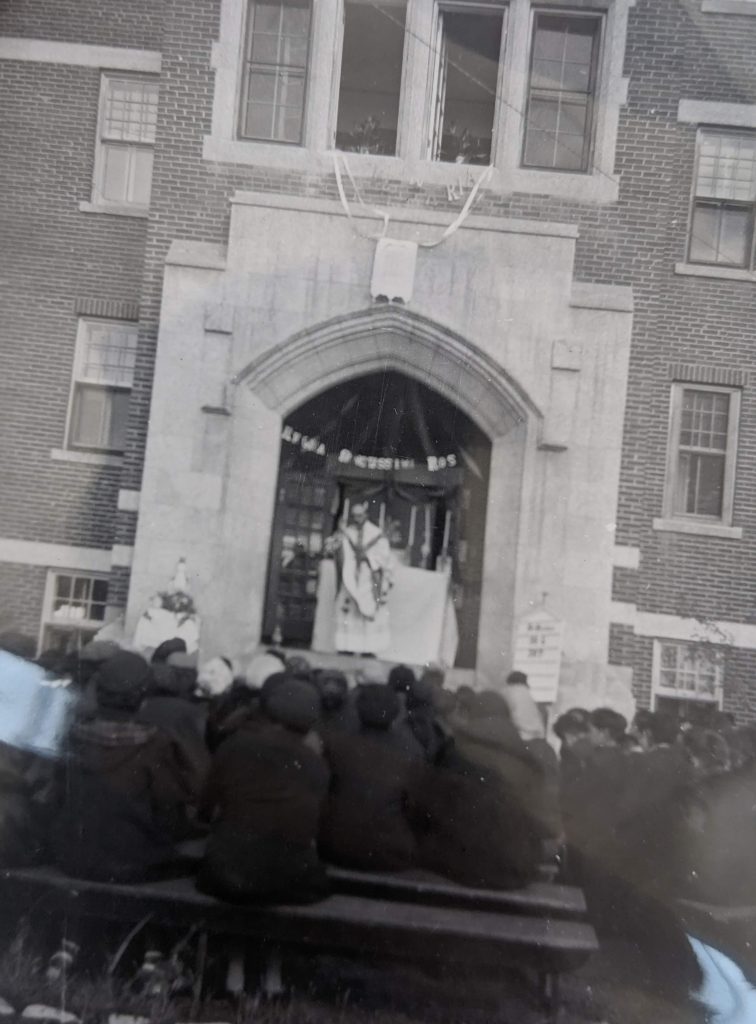
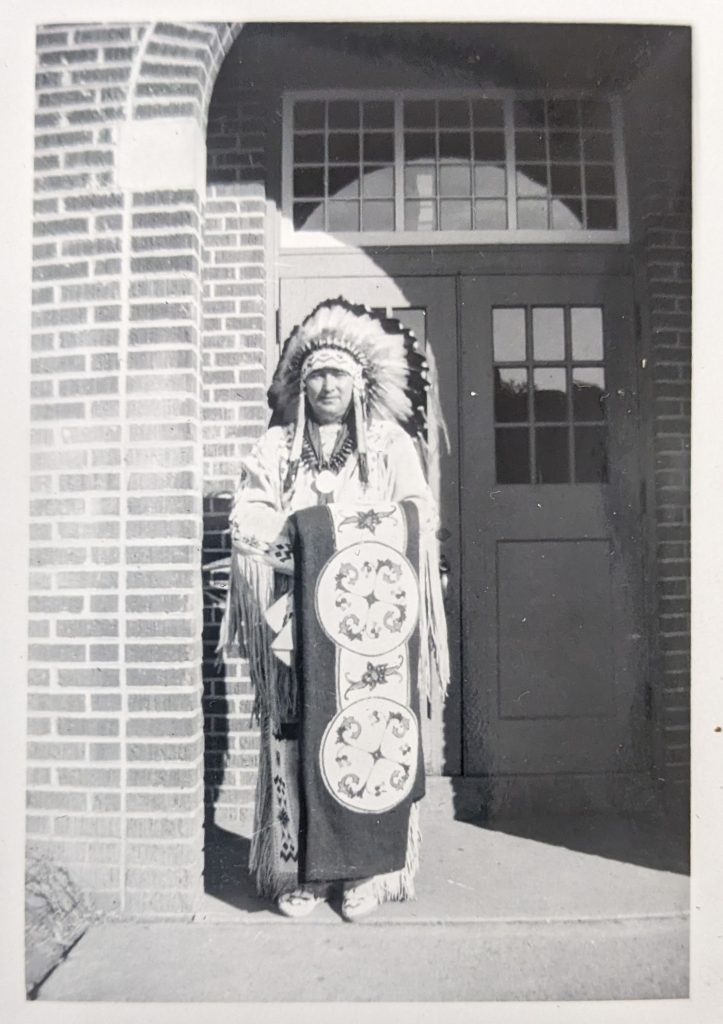
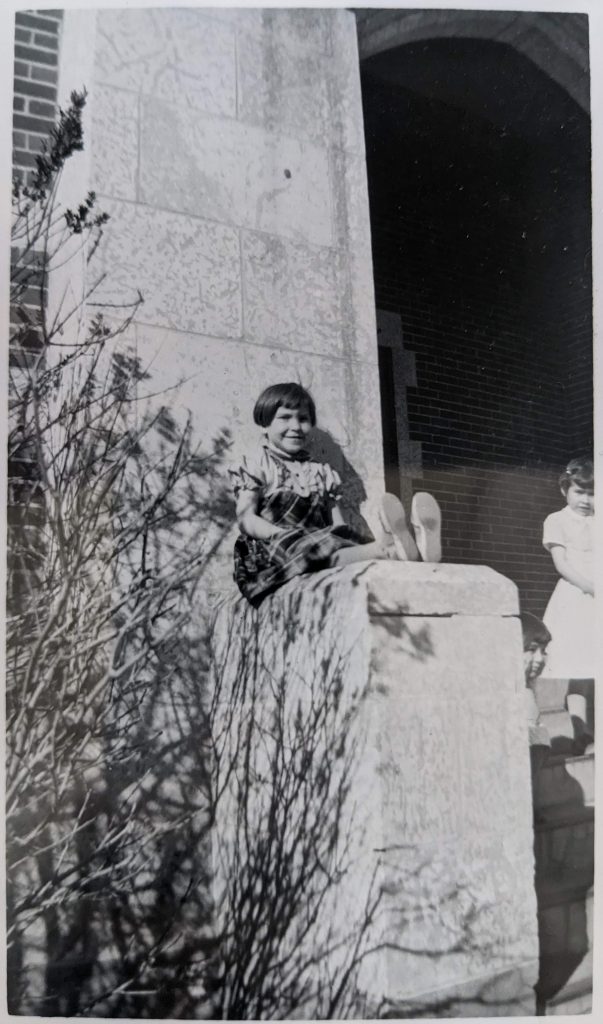
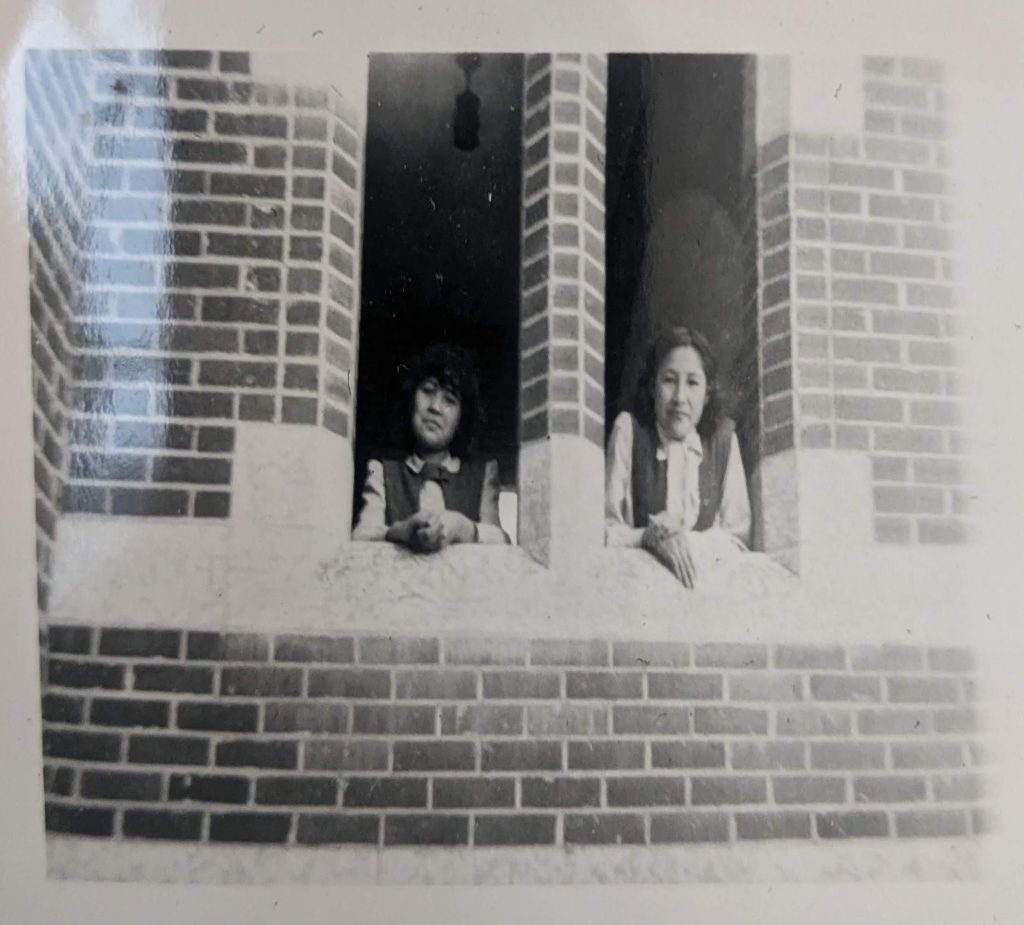

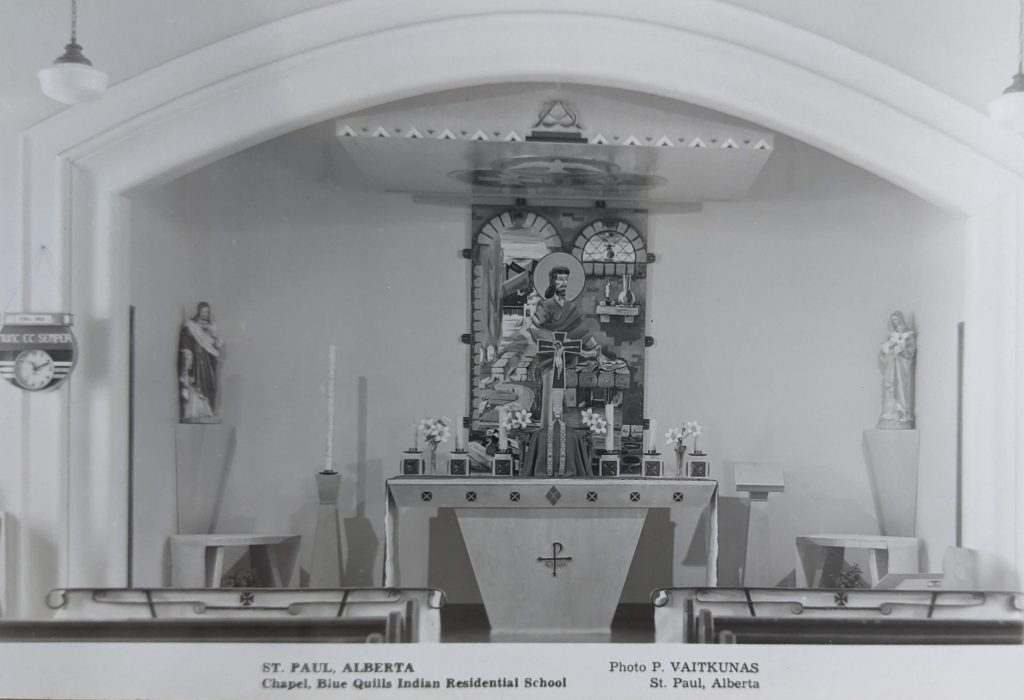

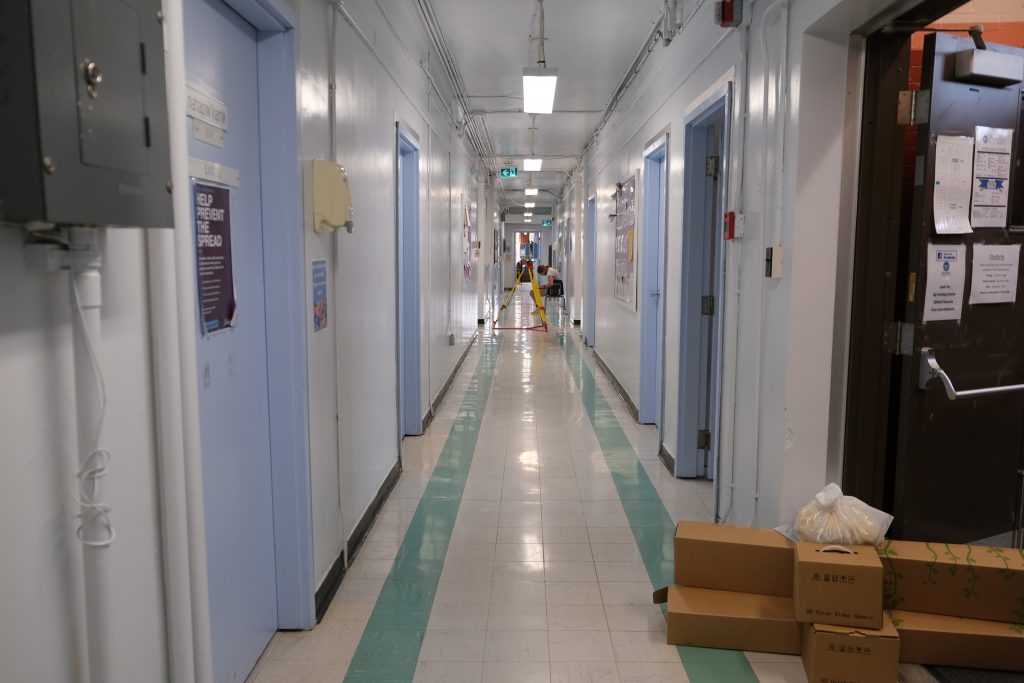
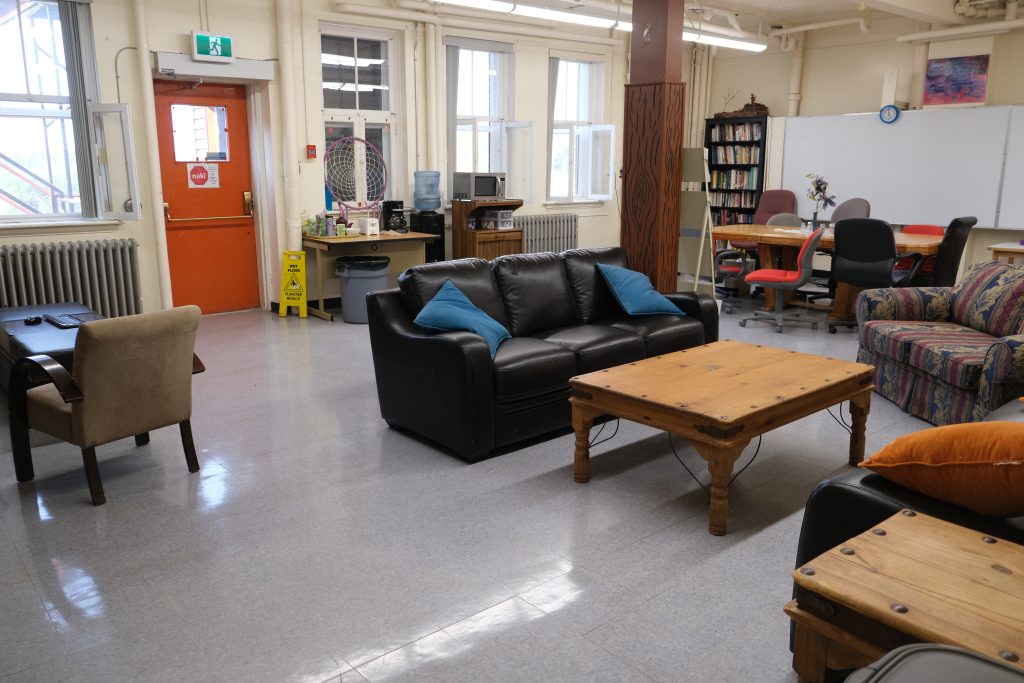

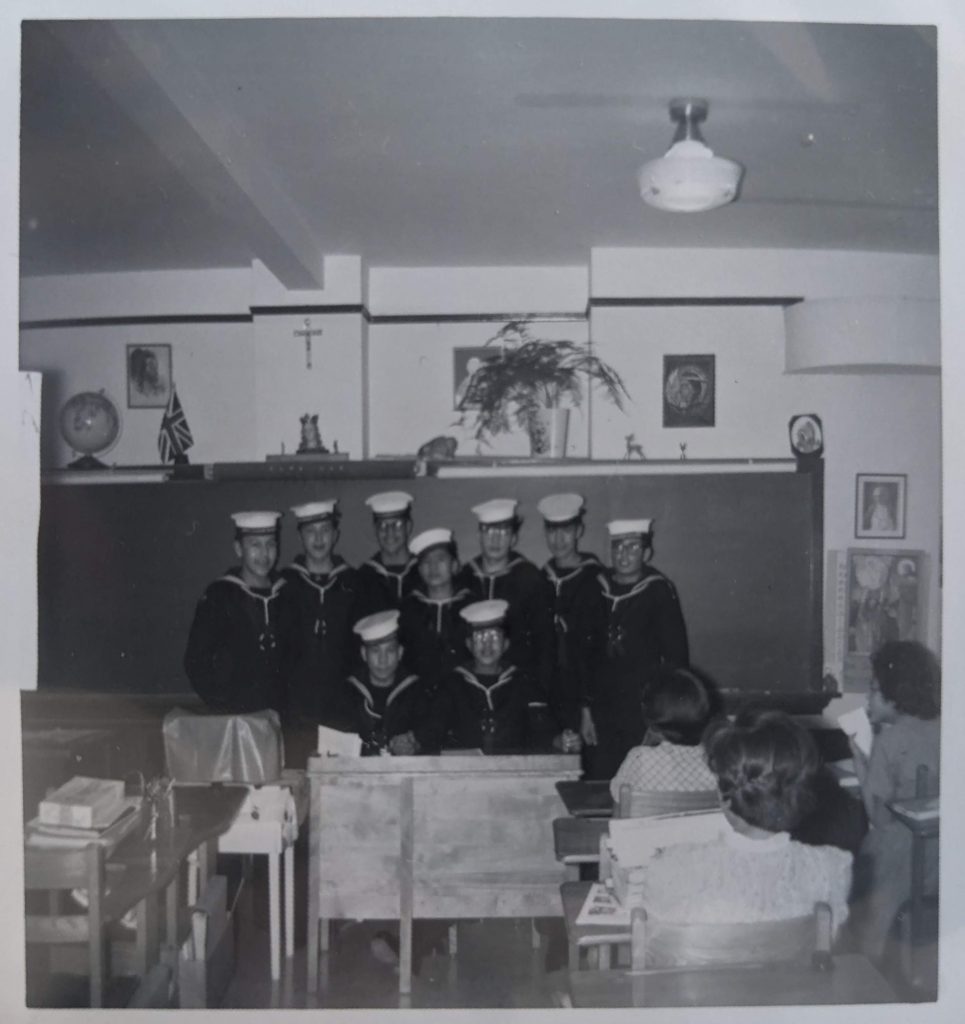
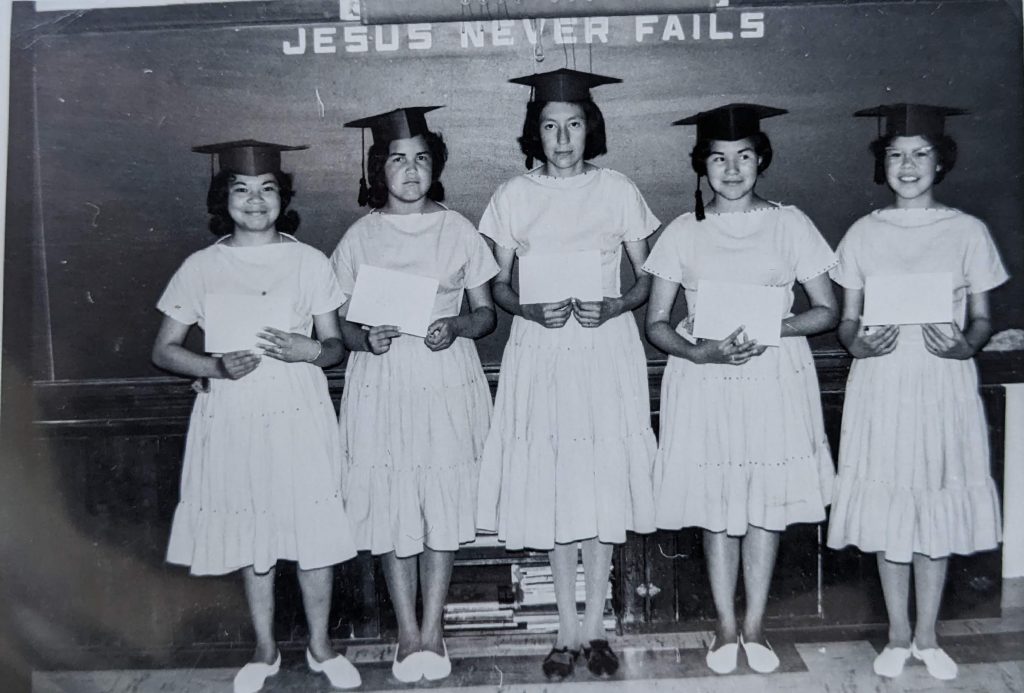
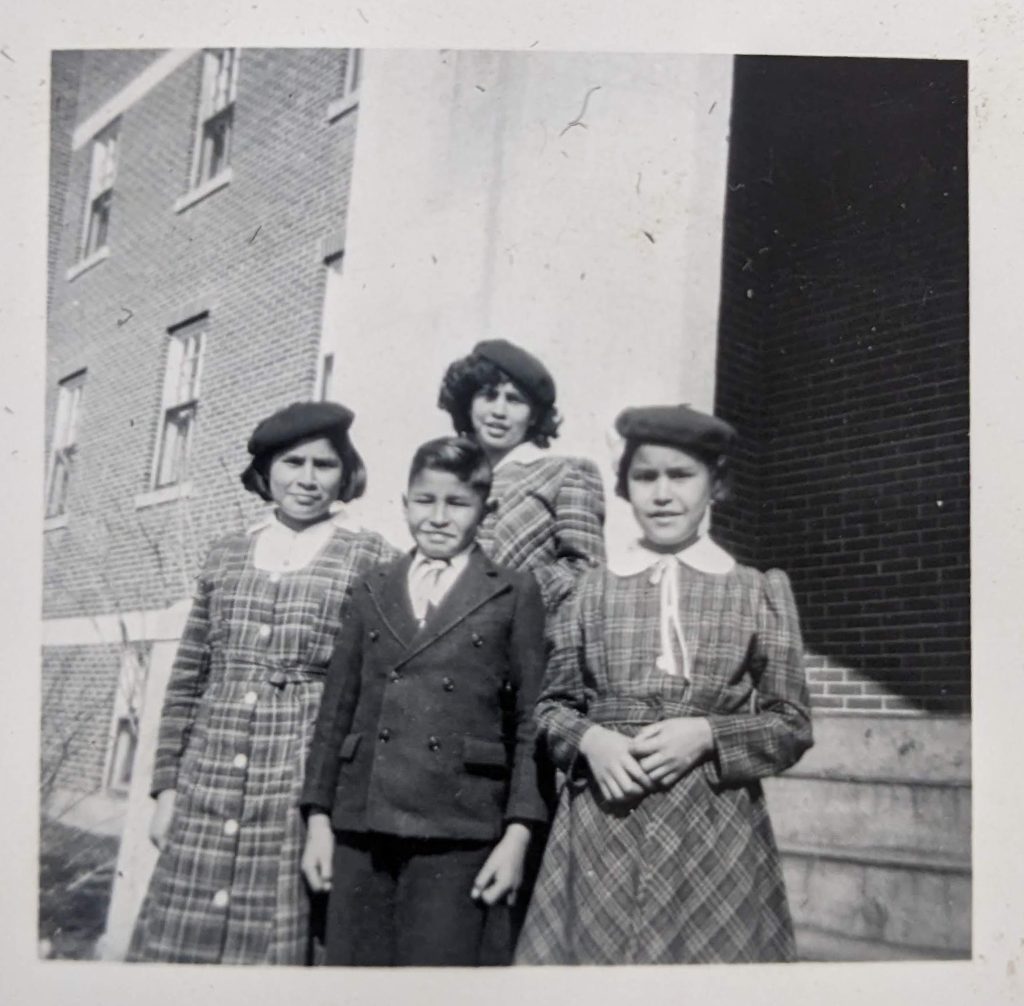
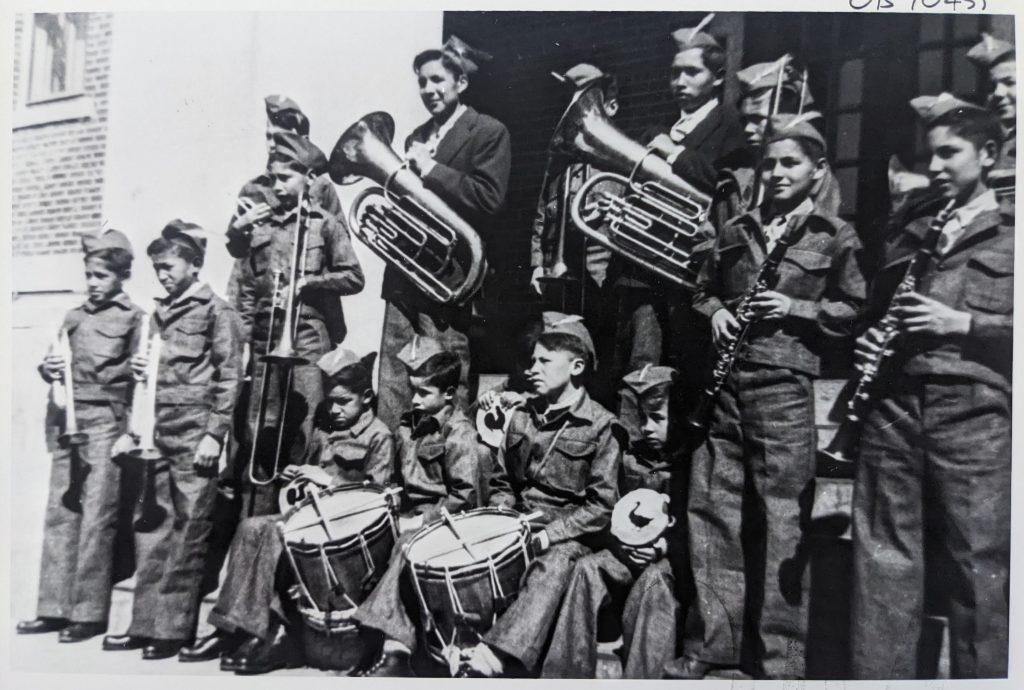
Laser scanning data can be used to create “as built” architectural plans which can support repair and restoration work to Old Sun Community College. This plan was created using Autodesk Revit and forms part of a larger building information model (BIM) of the school. The Revit drawings and laser scanning data for this school are securely archived with access controlled by the Old Sun Advisory Committee.
Some of the threats faced by Indigenous students attending residential schools came from the buildings themselves. The architectural plans contained in this archive, which have been constructed using the laser scanning data, illustrate how poorly these schools were designed from a safety perspective. There were three specific areas that placed the health and safety of students at great risk: Fire Hazards and Protection Measures; Water Quality, and Sanitation and Hygiene. As you explore the archive, you will find more information about the nature of these hazards and their impact on students.
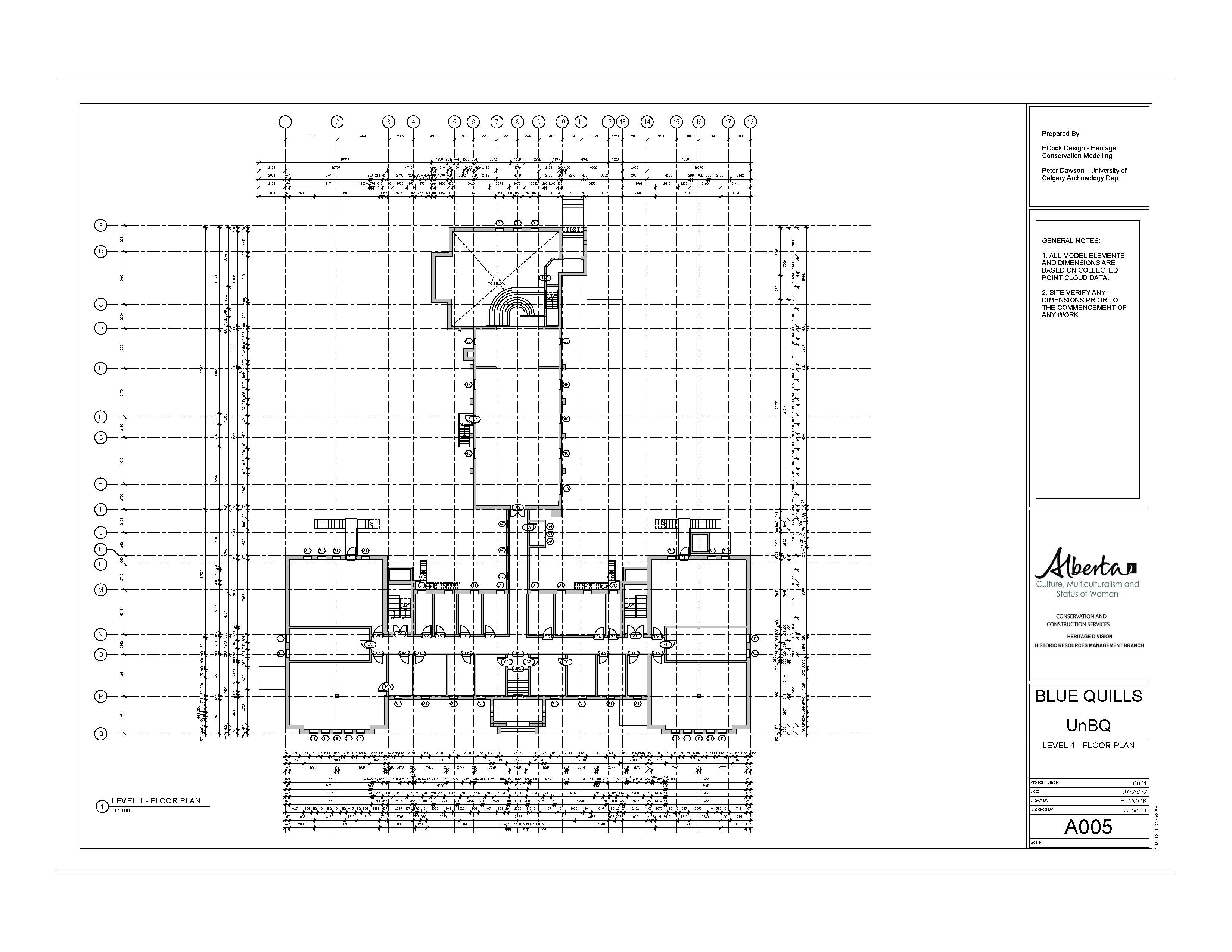
My name is Felix Muskego from Cold Lake First Nation. Trying to recall, and go back 50 years is very difficult. It’s very hard, and I went back there many times, trying to get a glimpse, trying to understand, trying to piece together, the many lost years.
I spent 13 years in a residential school, I was taken at five years old, 1957, and I got out 1970. And during those times, the most profound feeling, is one of being lost. Brought up to be afraid to express yourself, express your humanity, on a daily basis. We were afraid to even do anything, because whether you’re right or wrong, you were punished for it. It’s always physical punishment, belittlement.
Very little praise in the school for whatever you may have done good, or whatever. To grow up as a child in a normal family, that wasn’t to be because you’re separated, even in that school. I had most of my family went there, and we were separated by age group, gender, and once in a while you got to see your brother, sister, couldn’t talk to them.
This is what we’re exposed to year after year after a year. I could not understand who gave them the right to do this to you. For many years, I struggled with that, who gave them the right to treat you this way, like a non-human being, a non-person, you know? I just, I don’t…
I guess I went there, I first got there, and they give you a number, and that’s your name. Your number was your name, and we had to go rank and order. And there again, they taught you to… to try to indoctrinate you with religion, pound in you a fear of God or whatever God’s supposed to be.
Made you pray, maybe seven times a day. Go to church every morning, whether you like it or not, on your hands and knees, on a cold cement floor to say your Catholic prayers.
– Felix Muskego
Notes:
Felix Muskego Testimony. SC149_part05. Shared at Alberta National Event (ABNE) Sharing Circle. March 29, 2014. National Centre for Truth and Reconciliation holds copyright. https://archives.nctr.ca/SC149_part05
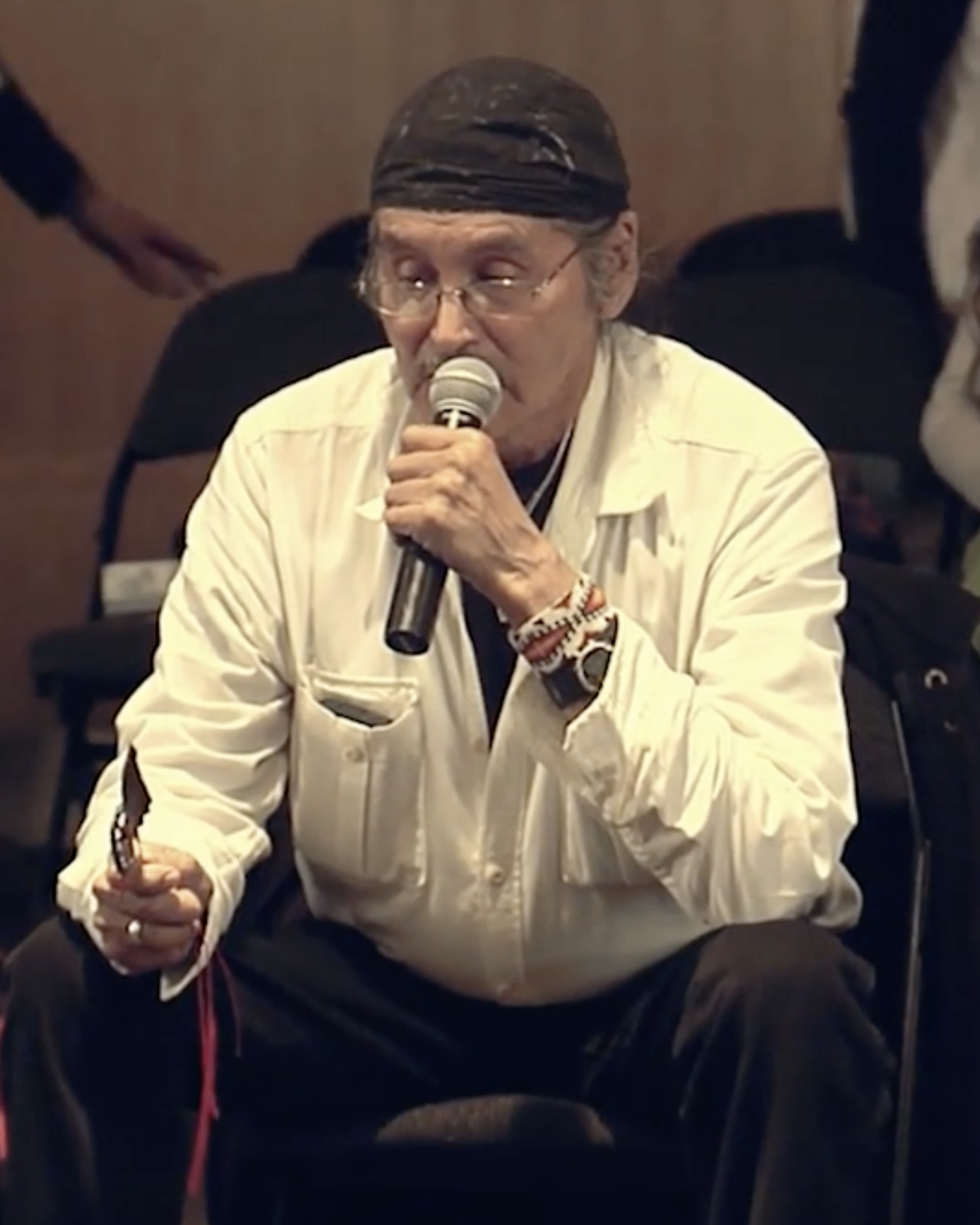

The boiler room and former coal shoot at Universit…
Read more
The Library at University nuhelot’įne thaiyots’į n…
Read more
The 3rd Floor of University nuhelot’įne thaiyots’į…
Read more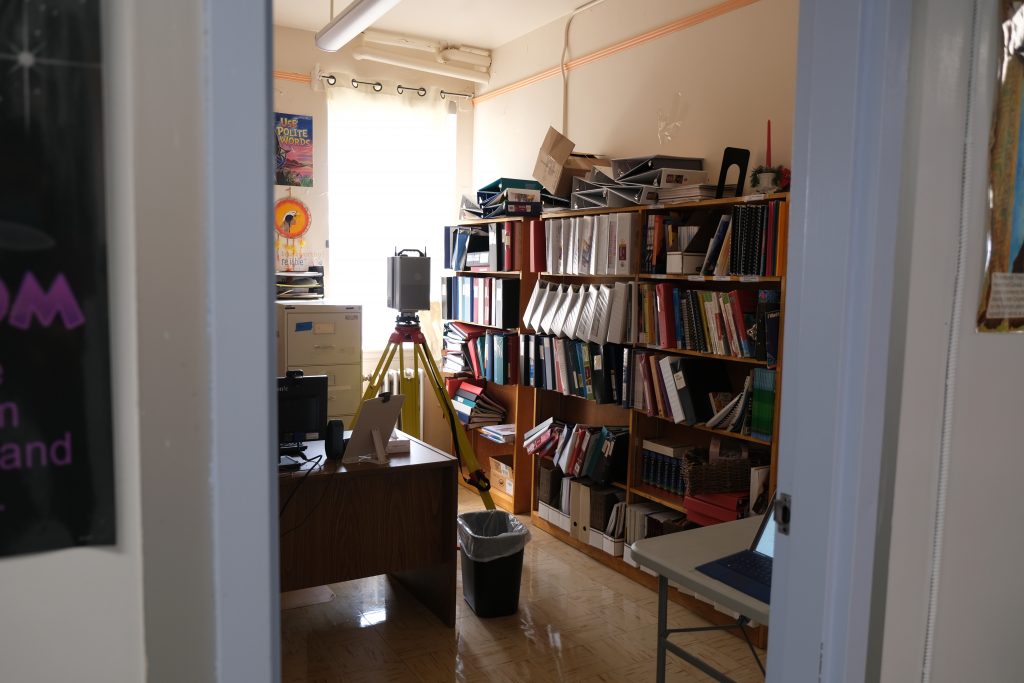
The 2nd Floor of University nuhelot’įne thaiyots’į…
Read more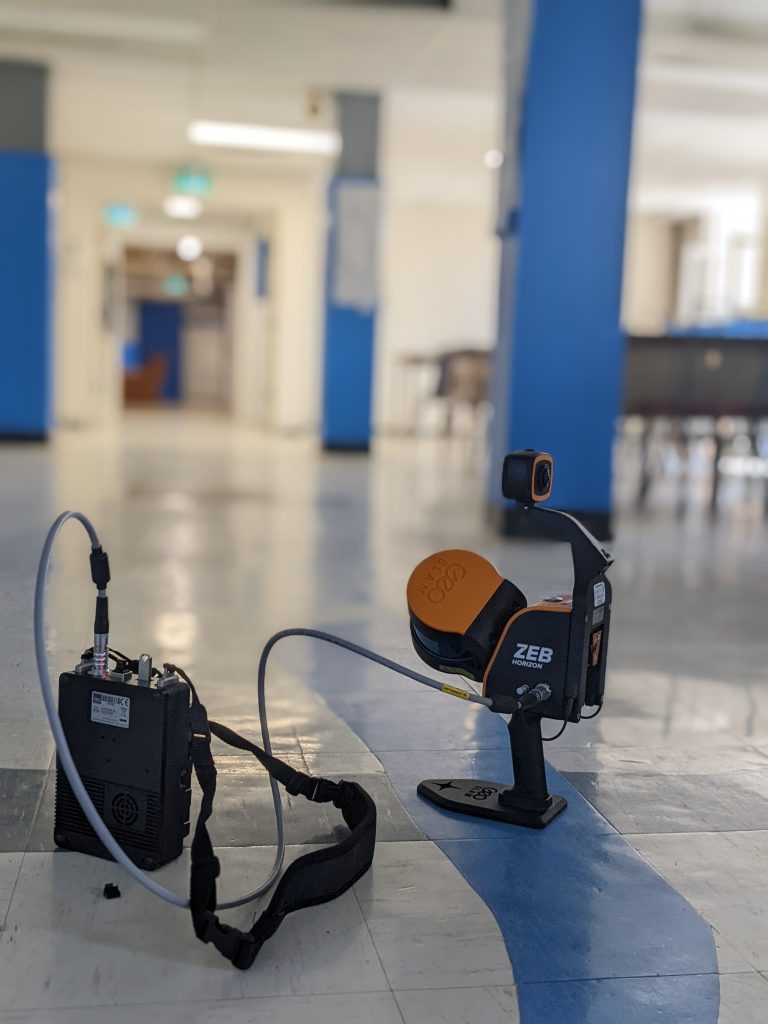
The basement of University nuhelot’įne thaiyots’į…
Read more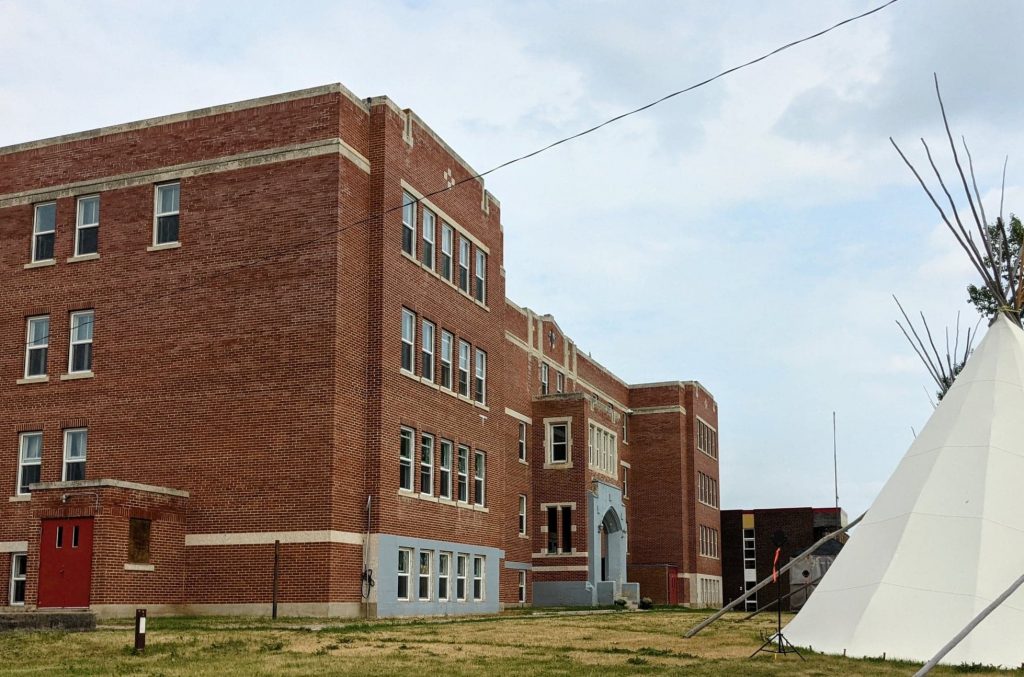
The University nuhelot’įne thaiyots’į nistameyimâk…
Read more